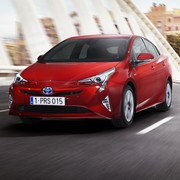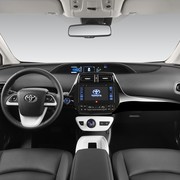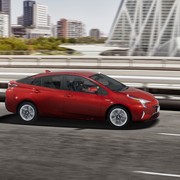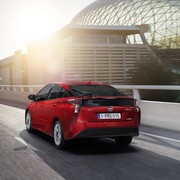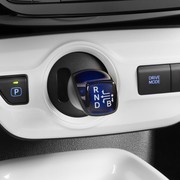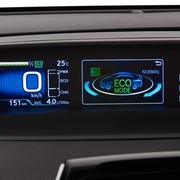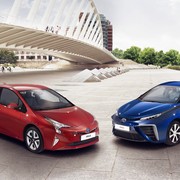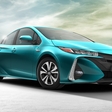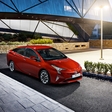
According to Toyota, the new Toyota Prius is setting a milestone in Fuel Economy and Fuel Consumption.
In its fourth generation, Prius reaches the norm fuel consumption of 3.0 liters of fuel per 100 kilometers, and offers fuel economy of up to 94.2mpg with CO2 emissions from 70g/km. Despite that it can accelarate from 0 to 100 km/h in 10.6 seconds, and while on highways, it takes 8.3 seconds of accelaration from 80 to 120 km/h. The new Prius' top speed is 180 km/h.
There are many reasons, contributing to making such a solid step forward in improving fuel economy comapred to previous generations. One of them is the new, aerodynamic and sleeker design, making the coefficient of drag lower its number to 0.24, compared to 0.25 for a 2015 Prius Liftback.
A key role is played by the new, 1.8-liter four-cylinder Atkinson cycle gasoline engine VVT-i and 40 percent thermal efficiency. In order to reach that, the engineers had to reduce friction also between the moving parts and they tried to do the same with other components of the drive circuit as well. The new nickel-metal hydride (NiMH) battery is smaller and completely hidden under the rear seats, but it comes with higher energy density, so it can store a lot more energy than before. The hybrid system produces a total output of 90 kW or 122 horsepower, while the latest control unit depends more on electricity, causing the gasoline engine to respond in a more 'natural' way. The fourth generation Prius is for the first time ever capable of towing an unbraked trailer of up to 725kg.
Contributing to Toyota Prius' better performance is also the new Toyota New Global Architecture (TNGA) platform, due to which the center of gravity became 2.5 centimeters lower.The new Prius brings an increase of more than 60% in body rigidity, while improved handling response and agility was also achieved by a new double-wishbone rear suspension. Toyota also improved the responsiveness of the gas pedal, the wheel and the brakes.
